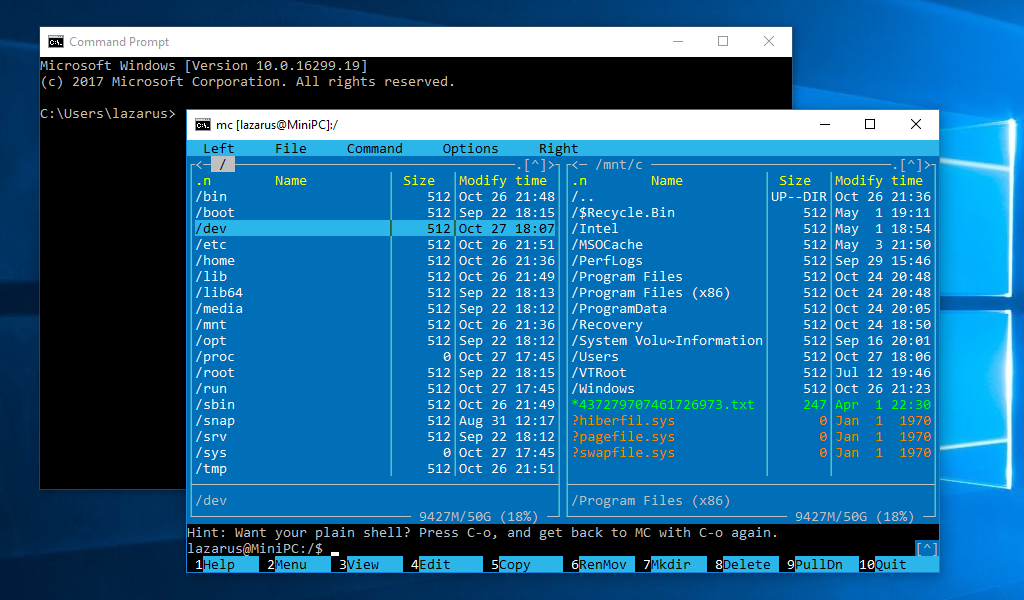
:max_bytes(150000):strip_icc()/008-how-to-install-bash-on-windows-10-bf1db105a0ea45dd94ce87a1712bc3dc.jpg)
We don’t use this often but it is sometimes useful to get certain things working. Thus we can use statements like i+=2, i–,++i, and so on and so forth. Finally, we have the incrementor/decrementer which changes the iterator/counter to a value that can be anything but in the example, we have used the unary operator (++) to increment the value by one which is equivalent to “i=i+1”. The second part is the end condition, here we have used the variable “n” which is initialized before the for loop and thus we use the simple $ operator to get the value of the variable. In the syntax above, we have initialized the loop iterator/counter to 1 that can be anything as per choice. C-styled for loops are the loops that have 3 parts, the initializing iterator, the incrementor/decrementer, and the end condition. Remember the spaces between the double braces might be intentional and are part of the syntax. #!/bin/usr/env bashĪs we can see we can dynamically use the value of the range of end conditions.

And thus, the C-styled for loops play a very important role. C-Styled for loopsĪs said earlier, we need to use the variables inside the for loops to iterate over a range of elements. Here, the “ n” is the iterator hence, we can print the value or do the required processing on it.

Using the operator we access all the elements and thus iterate over them in the for a loop. We use the variable in which, the curly braces here expand the value of the variable “s” here which is an array of strings. Thus using the for loop we iterate over them one by one. We can iterate over the array elements using the operator that gets all the elements in the array. Let’s look at the code: #!/bin/usr/env bash We can use the special variables in BASH i.e to access all the elements in the array. We can iterate over arrays conveniently in bash using for loops with a specific syntax. To use the variables, we see the traditional C-styled for loops in the next few sections. NOTE: We cannot use variables inside the curly braces, so we will have to hardcode the values. This can also be used with alphabetical characters. Thus this makes working with numbers very easy and convenient. Here we can see that the loop incremented by 2 units as mentioned in the curly braces. Hence we print 5 numbers from 1 to 5 both inclusive. Inside the curly braces, we specify the start point followed by two dots and an endpoint. In the above code, we use the “” to specify a range of numbers. The syntax looks like this: #!/bin/usr/env bash by mentioning the increment/decrementer value and by incrementing by one by default. In this type of loop, we can specify the number to start, to stop, and to increment at every iteration(optional) in the statement.
#Free bash shell for windows how to#
How to Hack WPA/WPA2 WiFi Using Kali Linux?.Mutex lock for Linux Thread Synchronization.SORT command in Linux/Unix with examples.AWK command in Unix/Linux with examples.Sed Command in Linux/Unix with examples.ISRO CS Syllabus for Scientist/Engineer Exam.ISRO CS Original Papers and Official Keys.GATE CS Original Papers and Official Keys.


 0 kommentar(er)
0 kommentar(er)
